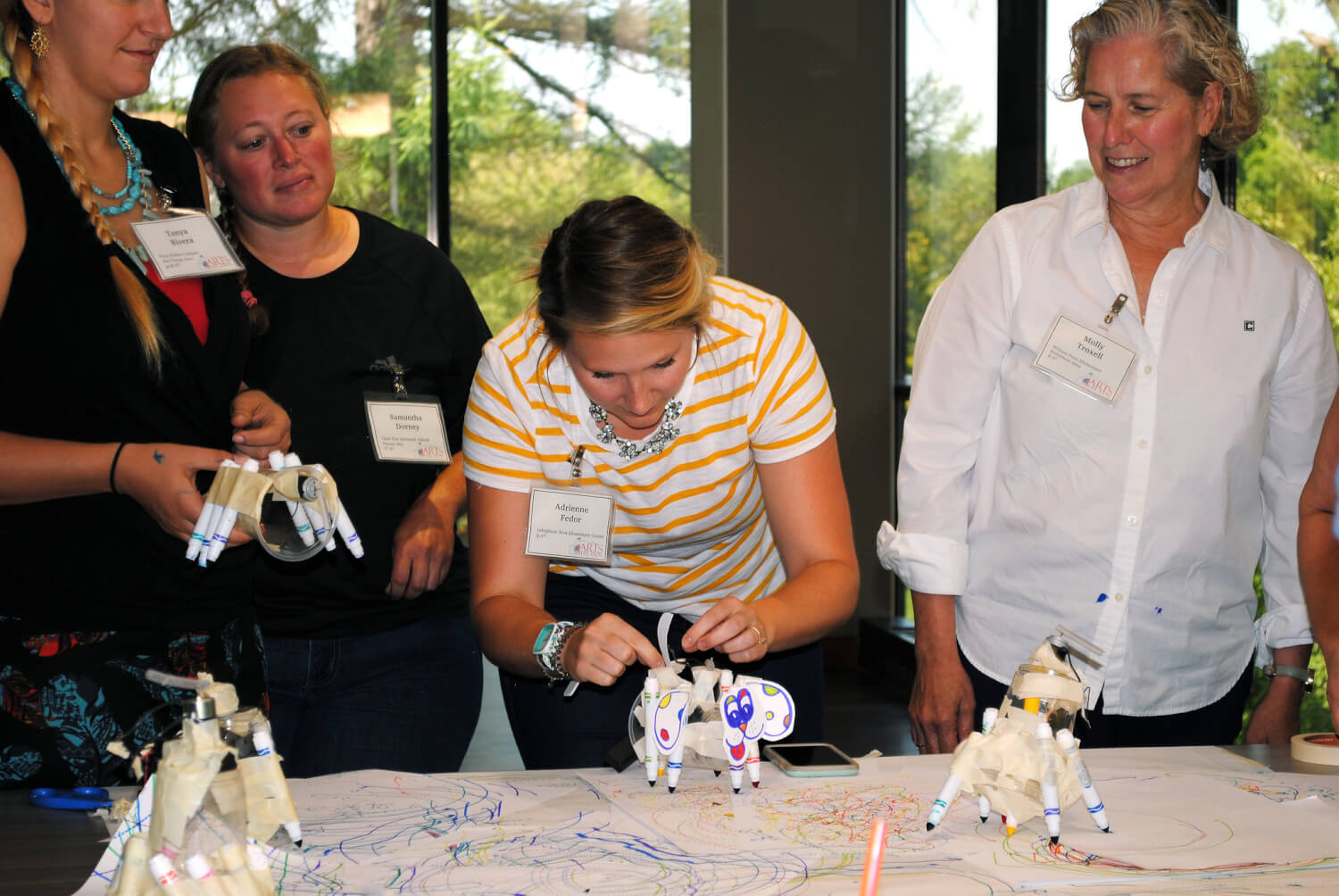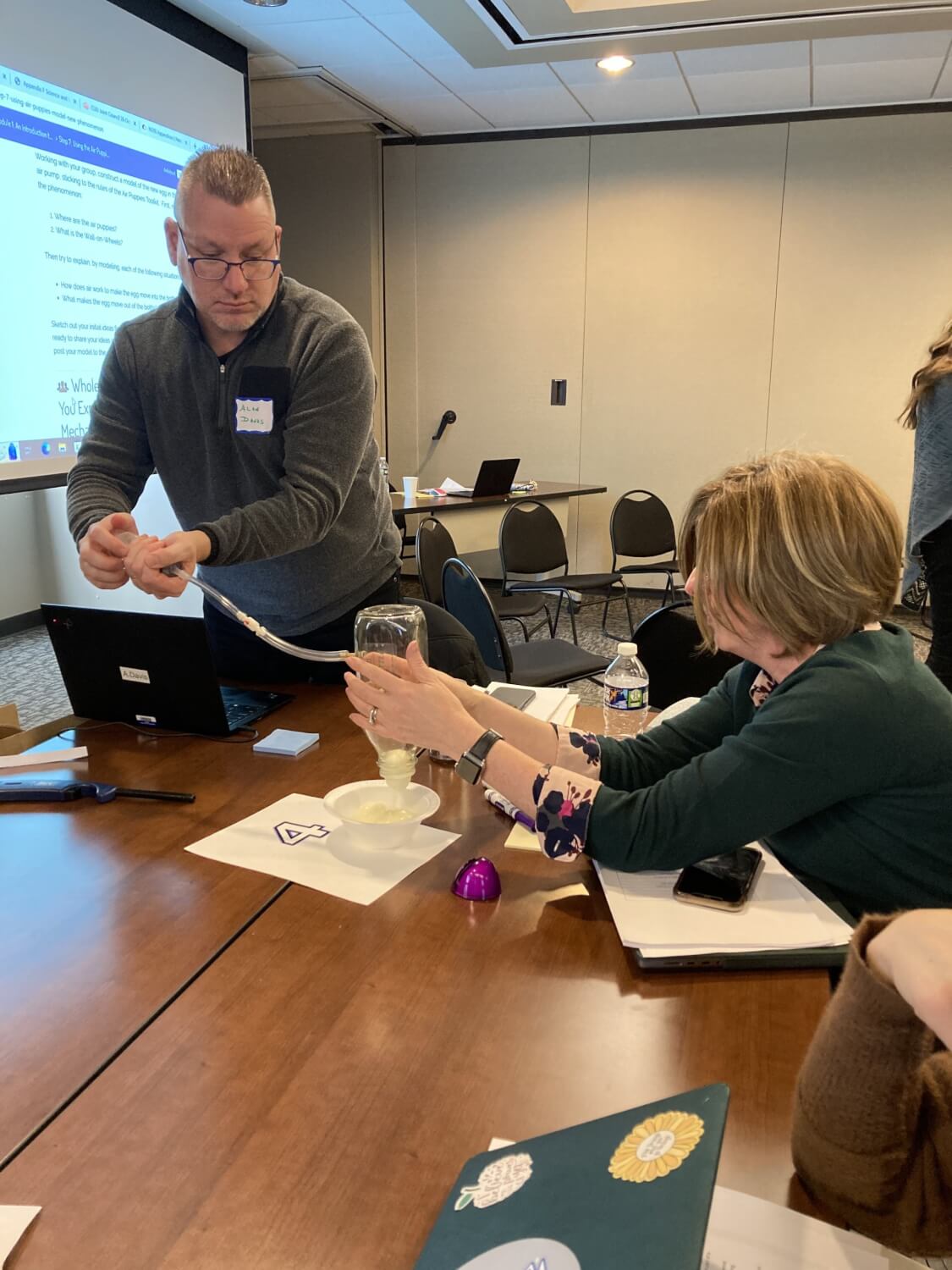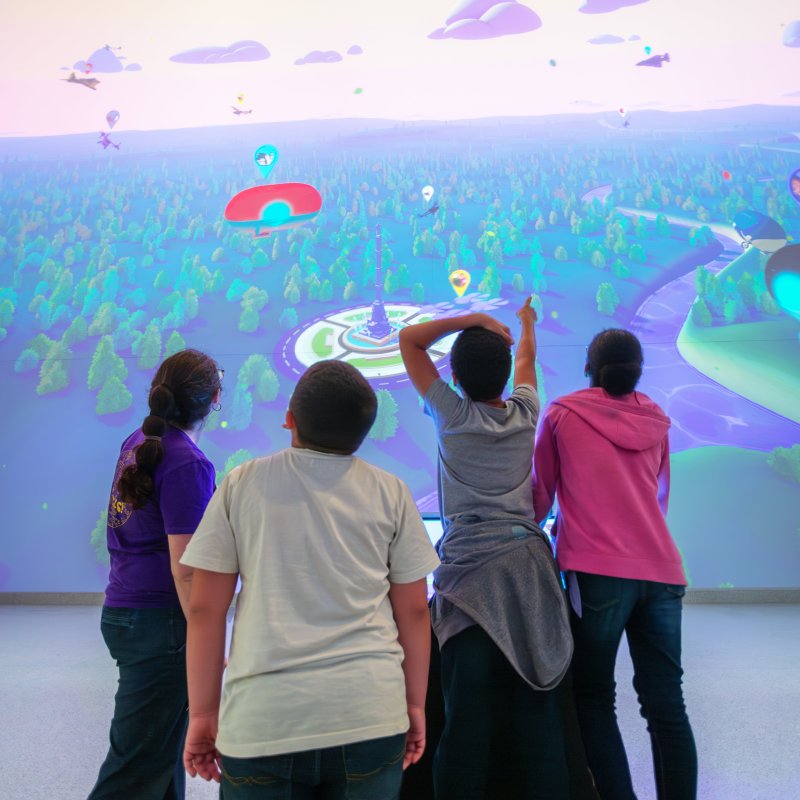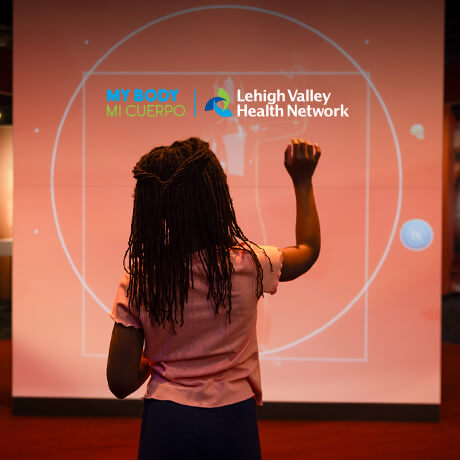Da Vinci Science Center professional development programs for educators are Act 48 approved by the Pennsylvania Department of Education and guaranteed to be active, engaging, and effective in bringing the STEAM subjects to life – science, technology, engineering, arts, and mathematics. The Science Center works with school districts to match their goals, time frames, and budgets with programs that will increase teachers’ knowledge in both content and pedagogy and prepare them to implement the PA STEELS standards

Save on your next Professional Development Program with District Connect Memberships
District-wide discounts on field trips, traveling science programs, and professional development.
Professional Development Program Pricing
| Full-day Program: $1,600 |
| Half-day Program: $800 |
| Workshop (2 hours): $400 |
| Travel fee charged for round trips >51 miles |
| NGSX programs have additional fees |
Programs for up to 30 teachers (at schools or at the Da Vinci Science Center at PPL Pavilion STEAM Learning Center)
Available Professional Development Programs
Call today to book these programs for your school!


Next Generation Science Exemplar (NGSX) Courses
Da Vinci Science Center is the trained, regional provider for NGSX, a research-based professional learning program that has helped districts prepare for implementation of Next Generation science standards in 28 states (over 15,000 K-12 teachers, administrators, and instructional leaders).
In each course, participants
- engage as learners in hands-on science investigations, make and revise models, and together construct explanations of complex phenomena, just as their students will
- through video examples, reflect together on how students and teachers can work together as a community to change classrooms from places where students learn about science, to places where they figure out how and why things happen in the world
Becoming a Next Generation Science Teacher (BNGST)
This 4-day interactive experience centers equity and agency for students and teachers. Teachers will develop their capacity to make instructional shifts in their practice required by STEELS, including:
- Engaging their students in the practices of modeling, argumentation, and explanation
- Building an equitable classroom culture where all students are supported to go public with their reasoning and build on their classmates’ ideas in productive small and whole group sensemaking discussions
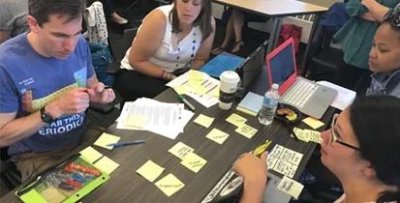
Principals Learn and Network to Support 3-Dimensional Science Learning (PLANS) – Pathway for Administrators and Instructional Leaders
This 1.5 day course samples some of the experiences in the longer BNGST course, allowing instructional leaders to develop their capacity to identify the essential pieces of what it looks, sounds, and feels like when students and teachers are engaged in Next Generation teaching and learning:
- Exploring tools to use in their work actively supporting teachers at the building and district level
- Beginning to plan for changes in instructional contexts, and form networks while crafting concrete next steps
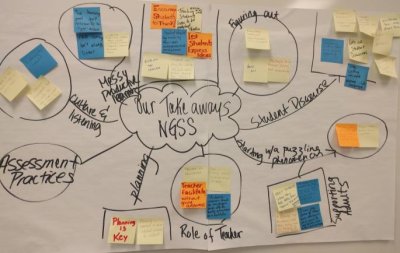
Inquiry Institute
Over several class meetings, teams of teachers engage in instructional modules that prepare them to use their STEELS-aligned science curriculum effectively and/or to adapt existing curriculum.
- Participate as learners in an immersive, multimodal science investigation
- Discover what makes a good anchor phenomenon
- Delve into the grade level progressions for Science and Engineering Practices, Crosscutting Concepts, and Disciplinary Core Ideas
- Learn teacher moves to facilitate students’ productive classroom talk
- Evaluate lessons for alignment with 3-dimensional teaching and learning methods
- Learn how to teach teamwork through fun, low-stakes, interactive exercises
- Consider how the integration of engineering in STEELS can increase equity
- Examine the features of 3-dimensional assessments
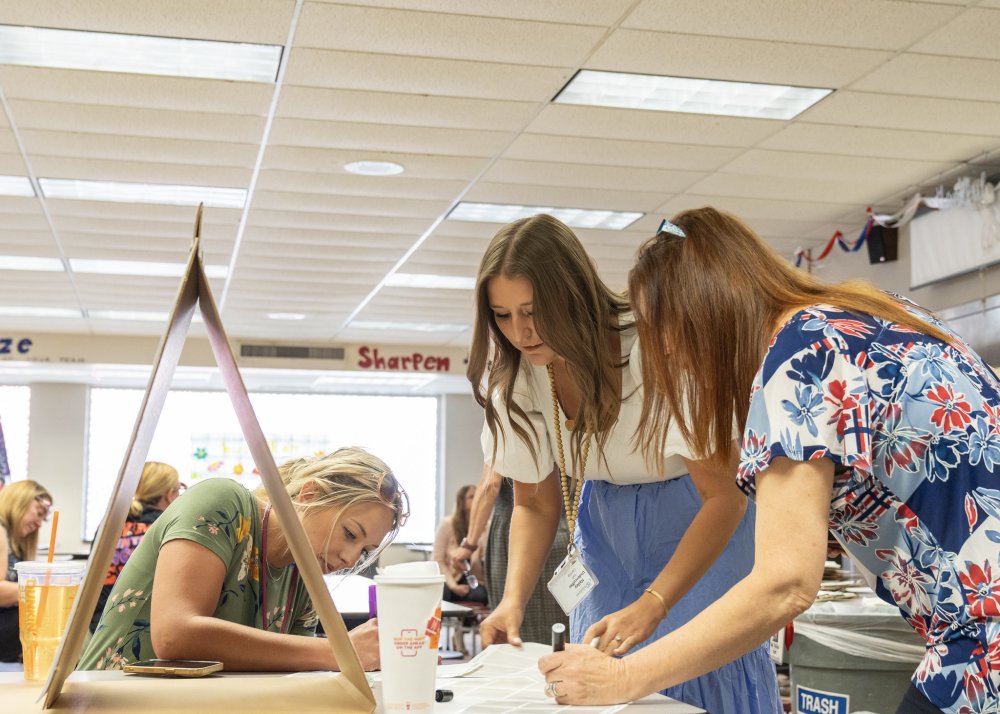
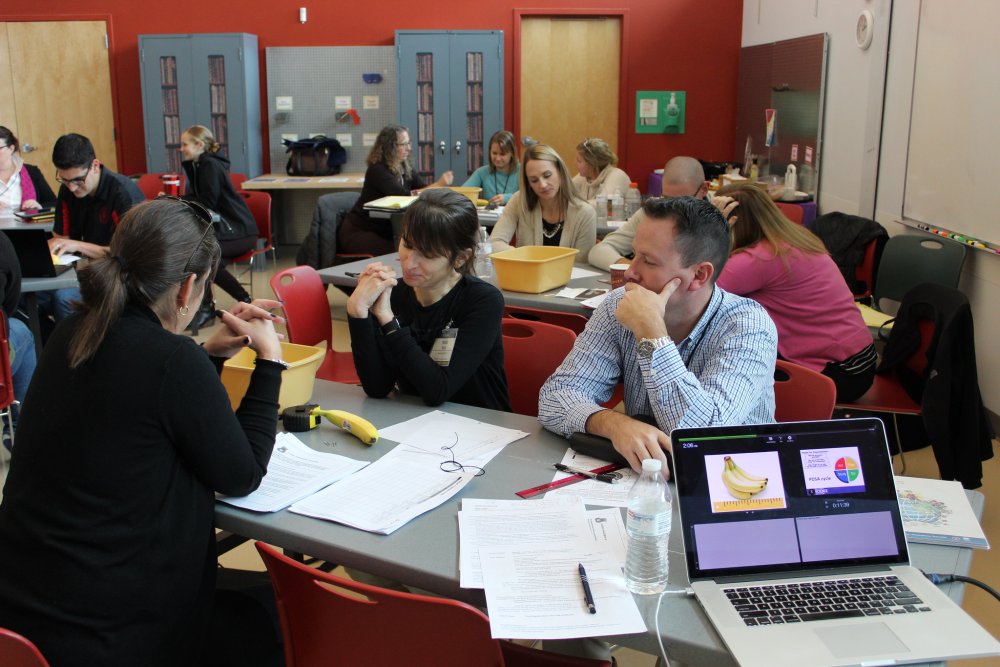
STEAM and Making: Integrating the Arts with STEM
Arts integration increases student motivation and engagement and includes everything from low-tech engineering design challenges to making with more specialized technologies (like MakeyMakey, robotics, electronics, wearable technology, coding, game design, or 3D digital design and printing). Through hands-on experience, teachers discover how arts content standards and STEM standards can mutually reinforce each other in open-ended, curiosity-driven activities.
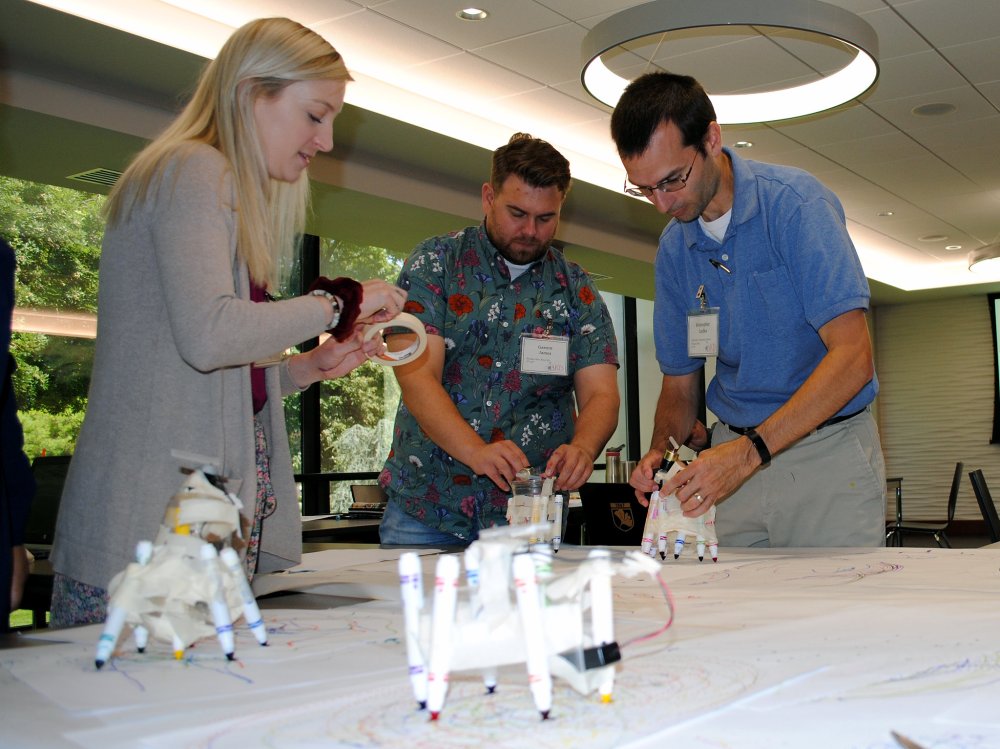
Design Thinking
Design thinking is a fast-paced, structured approach to problem-solving that begins by developing empathy, and proceeds through phases of brainstorming, rapid prototyping, and testing. Teachers complete a design challenge and learn how to apply this versatile strategy in authentic project-based learning tasks that promote a growth mindset and increase students’ creative confidence.
